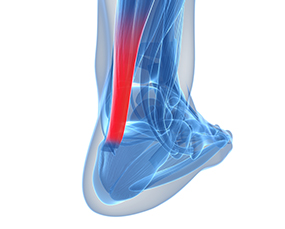
Tendinitis 101
by: Christine Ziade, Registered Physiotherapist
Tendinitis can be absolutely painful. It is an injury that will likely affect all of us at least once in our life. Having tendinitis can be extremely frustrated and debilitating and can prevent you from accomplishing your daily tasks and carry on with your fitness goals. So what is it? What can we do about it? And will it ever go away?
What is tendinitis?
First of all, a tendon is the end of the muscle which attaches the muscle to the bone. Tendinitis basically means: inflammation of the tendon. Most of the time, tendinitis can be caused by repetitive movements over time, improper techniques and/or poor postural alignment. This can put excessive stress on the tendons and start causing inflammation in the area. Tendinitis often causes swelling, pain and tenderness when the muscle or joint is being used or over stretched. Typical and common locations of tendinitis occurs in your shoulders, elbows, knees and ankles to name a few. There are also other words used for tendinitis in specific body parts which include: Tennis elbow (tendinitis in the outer elbow), Golfer’s elbow (tendinitis in the inner elbow), Jumper’s knee (tendinitis under the knee cap), Achilles tendinitis (you guessed it - tendinitis along your achilles tendon!).
But just to be clear, you do not have to be playing tennis or golf, or running excessively to develop any of the mentioned tendinitis listed above.
How do you get tendinitis?
Repetitive movement and improper exercise technique can cause excessive wear and tear as well as repetitive load on the tendon. Awkward positioning, vibration and excessive force can all be contributing factors in developing tendinitis. There are some sports that commonly cause tendinitis, such as racket sports, golf, swimming, baseball, and running. These sports require repetitive movement patterns and sometime utilizing mostly one side of the body. For example, a tennis player spending excessive hours playing or an individual spending all weekend painting the house, can develop tendinitis on the outer side of the elbow. Making a fist, turning a doorknob, holding onto a frying pan, styling your hair, pulling a laptop out of a work bag are all examples of movements that can become problematic with tendinitis of the elbow.
What can I do to prevent it? And how can I fix it?
There are a few things you can do to prevent tendinitis from happening:
First is STRETCHING and STRENGTHENING: Maintaining and maximizing the range of motion of your joints and muscles can help decrease the pull and the wear and tear of the tendon. Good flexibility in addition to strengthening the joint in ALL of its range will help keep your joints and tendons healthy. Furthermore, it will allow you to bulletproof your joints and help you be more resilient to any extreme force placed on the joint.
Second is to improve your POSTURE and TECHNIQUE: These two can sometimes come hand in hand. Making sure you are doing the movement correctly and with ease, instead of compensating, can go a long way. Optimizing your posture while sitting for example, can prevent future problems in your shoulder (i.e rotator cuff tendinitis). If your shoulders are constantly rounded and your head is pitching forward for prolonged hours in front of the computer, that’s a recipe for future problems. You will develop lack of mobility in the chest, shoulders, upper body and neck - all strong contributors to developing some form of rotator cuff tendinitis.
Third is good workplace ERGONOMICS: As mentioned above posture is important. Having an ergonomic assessment of your workspace can be of valuable importance and save you pain and agony down the road.
Fourth is CHANGE IT UP: If you can, mix your exercise routine. For example, Running 7 days a week will inevitably cause some wear and tear on your joints and tendons. Consider switching up your routine with lower impact exercises a few days a week such as swimming or yoga. This is what we call cross training. By changing your regimen, you are reducing your chances of injury and allowing your body to “rest” (more below). There are many more benefits of cross training - and probably a great topic for another blog post!
Fifth is REST: Rest can also go hand in hand with number 4. Rest is important for regeneration and repair of the tissues. Sometimes a complete cessation of the activity that is causing pain is exactly what is needed to help decrease inflammation and eliminate the constant and repetitive load on the tendon. Applying cold like an ice or gel pack on the joint/tendon can help ease some of the pain and inflammation. Heat will increase the inflammation.
Your physiotherapist is here to mentor you through the process and provide the best recommendation and treatment plan. With a full body assessment, your physiotherapist will be able to assess if your tendinitis is a result of faulty biomechanics, poor technique, repetitive strain injury, poor posture, or even maybe an old injury. A customized treatment plan which includes some manual therapy, modalities (i.e acupuncture, ultrasound and/or shockwave therapy), along with an exercise program of stretching and strengthening, will guide you to the fastest road to recovery. Your family doctor might also prescribe pain relievers or an anti-inflammatory to help with the recovery. Your doctor may also recommend an x-ray or ultrasound to rule out anything else, however for the most part, a diagnosis can be made without an image. That being said, you do not need imaging before seeking help from a physiotherapist. We look forward to helping you get back on your feet and back to your regular activities pain free in the least amount of time possible.
 0 Comment
0 Comment 




Leave A Comment